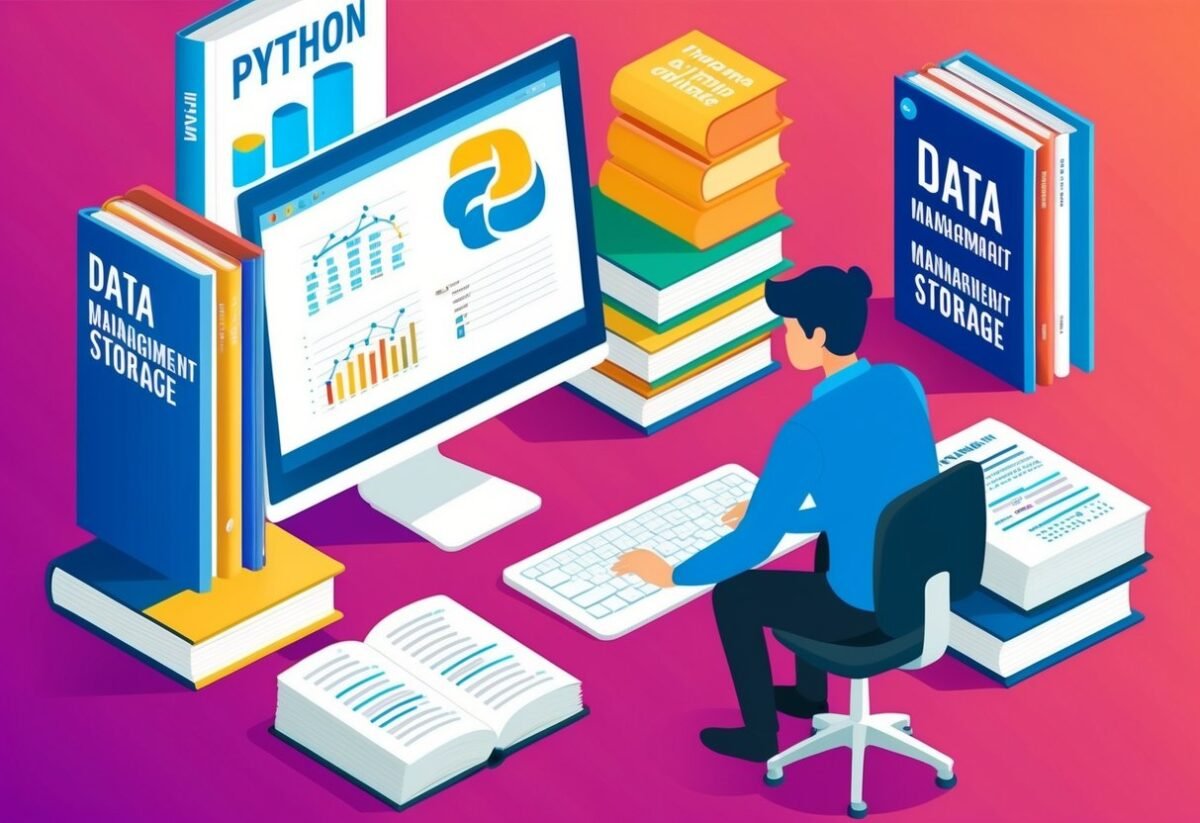Python Fundamentals for Data Science
Python is a vital tool in data science and requires a clear grasp of its core features.
Key components include understanding data types, such as arrays and dictionaries, and mastering loops for repetitive tasks.
Understanding Python Data Types
Data types are the foundation of any programming language, including Python. These types define the kind of data a variable can hold, influencing how it’s handled in operations.
In Python, common data types include integers, floats, strings, and Booleans.
Arrays are crucial when dealing with large data sets because they allow for efficient storage and manipulation of sequences of numbers or strings.
Python uses lists to handle arrays, offering flexibility to resize dynamically.
Dictionaries, on the other hand, store data in key-value pairs. This is especially useful in data science for quickly accessing and organizing information.
They provide an efficient way to handle varied data while maintaining readability and structure.
Loops, like ‘for’ and ‘while’, enable repetition of tasks, making the code more efficient and reducing redundancy.
Data structures such as lists and dictionaries combined with loops help process large data sets effectively, which is a frequent requirement in data science workflows.
Essential Python Libraries
Understanding key Python libraries is crucial for anyone involved in data science. These tools enable efficient computation, data manipulation, and engaging data visualization. This section highlights some essential libraries widely used by data professionals.
NumPy for Numerical Computing
NumPy is a vital library for numerical computation in Python. It offers support for large multi-dimensional arrays and matrices, along with a collection of mathematical functions to operate on these arrays.
This library is known for its performance due to its efficient handling of array-based operations.
NumPy provides functionalities such as element-wise operations, reshaping of arrays, and aggregation functions like mean, median, and sum.
It serves as the foundation for many other data science libraries, making it a core component for scientific computing.
By offering a range of tools that simplify complex computations, NumPy ensures accurate and efficient processing of numerical data.
Pandas for Data Manipulation
Pandas is indispensable for data manipulation and analysis. It introduces two primary data structures: Series and DataFrame, which allow for easy handling of data in tabular form.
Pandas excels in tasks such as cleaning, profiling, and transforming data due to its intuitive syntax and powerful functions.
Consider the ease with which one can filter data, apply aggregate functions, and merge datasets using Pandas.
Its ability to handle missing data and support time series data makes it notably versatile.
With the functionality to import and export data in various formats — such as CSV, Excel, and SQL — Pandas streamlines the process of managing data throughout its lifecycle.
Matplotlib and Seaborn for Data Visualization
For data visualization, Matplotlib is often the go-to library. It provides comprehensive features for creating static, animated, and interactive visualizations in Python.
Users can plot basic graphs like line plots, bar charts, and scatter plots with a high degree of control over appearance.
Seaborn builds on Matplotlib, offering a more streamlined interface and attractive default styles. It specializes in making complex visualizations such as heatmaps and violin plots more accessible.
By simplifying the creation of informative and aesthetic visualizations, Matplotlib and Seaborn empower data scientists to effectively communicate insights drawn from data analysis.
Advanced Data Analysis Techniques
Advanced data analysis techniques are crucial for extracting meaningful insights from complex datasets. This involves effective handling of missing data, applying feature engineering methods, and utilizing statistical analysis to gain deeper understanding of data patterns and trends.
Handling Missing Data
Handling missing values is essential for accurate data analysis. Missing data can lead to biased results if not properly treated.
Imputation methods are often used to replace missing values. Common techniques include filling values using the mean, median, or mode of a dataset.
For categorical data, mode imputation can be particularly useful. In some cases, more advanced approaches like K-Nearest Neighbors (KNN) imputation or regression imputation might be applied.
These methods consider relationships and patterns within the dataset to estimate missing entries.
Another approach involves removing rows or columns with excessive missing values. However, this should be done cautiously, as it could lead to loss of important information.
Feature Engineering
Feature engineering transforms raw data into meaningful features that improve model performance. It involves creating new variables or modifying existing ones to highlight underlying structures.
Techniques like one-hot encoding help in dealing with categorical variables by converting them into numerical format.
Generating interaction features also helps capture the relationship between different features. Binning, another technique, groups numerical values into discrete bins, which can simplify complex data distributions.
Normalization and standardization are crucial for ensuring numerical features are on a similar scale, promoting better algorithm convergence.
Feature engineering plays a pivotal role in enhancing model accuracy by incorporating relevant data characteristics and removing redundancies. It bridges the gap between raw data and effective predictive modeling.
Statistical Analysis
Statistical analysis provides the foundation for extracting insights from data. It involves using various statistical methods to understand data distributions, identify outliers, and detect patterns.
Descriptive statistics summarize data attributes, providing a snapshot of central tendencies and variability.
Inferential statistics allow for hypothesis testing and drawing conclusions about a population based on sample data. Techniques such as t-tests, chi-square tests, and ANOVA help compare groups and variables to determine relationships and differences.
Regression analysis explores the relationships between dependent and independent variables, offering predictive insights.
By applying statistical methods, data scientists can uncover significant trends and make informed decisions based on empirical evidence.
Machine Learning with Scikit-Learn
Scikit-learn is a powerful Python library used for machine learning tasks like classification and regression. It simplifies working on data science projects by providing simple and efficient tools. The library can handle supervised and unsupervised learning, helping users choose and test models effectively.
Supervised vs. Unsupervised Learning
Supervised learning involves training algorithms using labeled data. This means that the input comes with the correct output, which helps the model learn to predict outcomes.
Popular techniques include classification, where the goal is to assign data to specific categories, and regression, which deals with predicting continuous values.
In contrast, unsupervised learning deals with unlabeled data. Its aim is to uncover hidden patterns or structures within datasets.
Clustering is a common method, which involves grouping similar data points together. Scikit-learn courses can help learners understand these concepts through hands-on examples and practical exercises.
Model Selection and Evaluation
Selecting the right machine learning model is essential for project success. Scikit-learn provides various algorithms and tools to help assess model performance, such as cross-validation and grid search.
These techniques ensure that models generalize well to new data.
Evaluating models involves analyzing metrics like accuracy, precision, and recall. These metrics provide insights into how effectively a model performs its tasks.
With diverse algorithms in scikit-learn, users can experiment and find the most suitable model for their needs. For those interested in advancing their skills, the scikit-learn cheat sheet offers a quick reference for implementing models efficiently.
Effective Data Visualization Strategies
To convey data effectively, selecting the right chart type and using interactive tools are crucial. These strategies help transform raw data into meaningful visuals, making it easier to interpret complex information.
Choosing the Right Chart Types
Choosing the right chart for data visualization enhances understanding and engagement.
Line charts are useful for displaying trends over time, connecting individual data points with a continuous line.
Bar charts, on the other hand, are great for comparing quantities across categories, offering a clear visual representation of differences.
Pie charts present proportions within a whole, showing how different parts make up a total.
More advanced plots include scatter plots, which show relationships between two variables, and histograms that display the distribution of a dataset.
Knowing when to use each type is essential for clear communication. Pairing data with suitable visuals allows audiences to grasp key insights quickly and efficiently.
Interactive Visuals with Plotly and Bokeh
Interactive visuals provide dynamic ways to explore data. Tools like Plotly and Bokeh are powerful for creating interactive content.
Plotly offers a high-level interface, enabling users to build interactive charts with zooming, panning, and tooltips that reveal more information.
Bokeh excels in creating plots that respond to real-time data updates. It integrates well with web applications, allowing for scalable and shareable visualizations.
With Bokeh, users can create interactive dashboards to display multiple plots, offering a comprehensive view of data.
Using these tools, analysts can build engaging and informative data experiences that keep audiences involved.
Programming for Data Acquisition
Programming for data acquisition involves retrieving data from different sources such as websites and APIs. This requires skills in handling APIs and scraping data from web pages using various techniques. Key tools include JSON for data format and web frameworks for managing requests and data extraction.
Working with APIs
APIs allow programmers to access data or services from other applications, making them essential for data acquisition. They often use JSON, a lightweight data format, to exchange information.
Programmers typically make HTTP requests through tools like requests in Python to retrieve this data.
Many organizations provide APIs for developers. Documentation is essential, so exploring resources like Stack Overflow can help solve related challenges.
It’s crucial to manage authentication, often through API keys, and handle responses effectively to extract needed data.
Data Scraping Techniques
Data scraping involves extracting information from websites when APIs are not available. This process begins with identifying the HTML structure of the web page.
Libraries such as BeautifulSoup or Scrapy in Python are commonly used for parsing and extracting data.
Scraping requires attention to ethical practices. Programmers should check the website’s robots.txt file to understand its scraping policies.
Often, it’s beneficial to combine scraping with web frameworks to automate and scale data collection. Addressing issues such as changing HTML structures can make scraping more resilient and effective.
Data Management and Storage Solutions
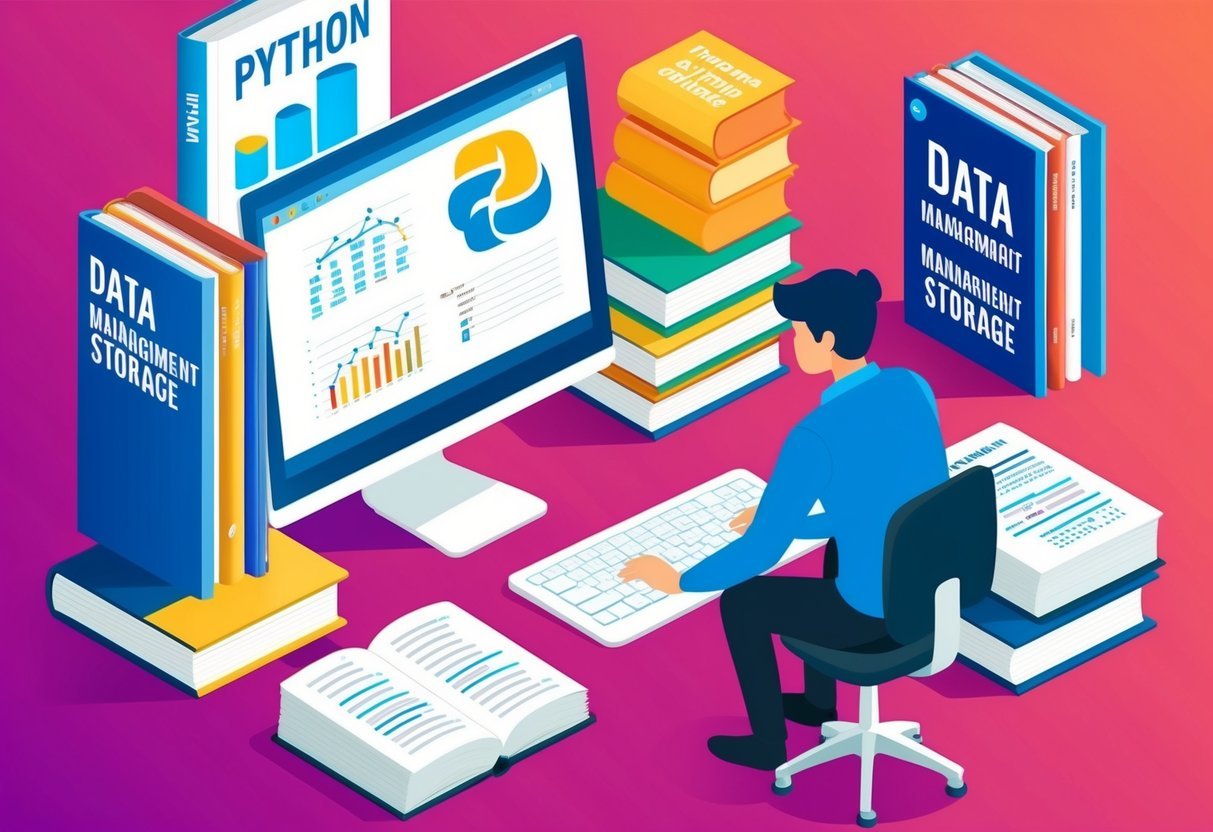
In the world of data science, managing and storing data efficiently is crucial. Understanding the differences between relational and NoSQL databases helps in choosing the right storage for data needs. Additionally, exploring how to leverage cloud storage solutions is important for scalability and accessibility.
Relational vs. NoSQL Databases
Relational databases are structured and use tables to store data. They are ideal for applications requiring complex queries and data integrity.
Examples include popular systems like MySQL, PostgreSQL, and Oracle. They are well-suited for transactional applications where consistency is key.
NoSQL databases offer flexibility and can handle unstructured data. They include document stores, key-value pairs, and column-oriented databases.
These databases, like MongoDB and Cassandra, are useful for scalable and distributed applications. They handle large volumes of data and offer high availability.
Leveraging Cloud Storage
Cloud storage provides scalable and cost-effective solutions for managing data.
Amazon S3 and Google Cloud Storage offer robust options with different tiers for varied needs.
They allow users to store large amounts of data with easy access and high durability.
Microsoft Azure Storage is another option, providing services like Blob Storage for unstructured data and Table Storage for structured NoSQL data.
These platforms support data archiving, backup, and disaster recovery, making them reliable choices for cloud storage.
Scalability and integrated tools for data analysis enhance their advantages.
Code Optimization and Best Practices
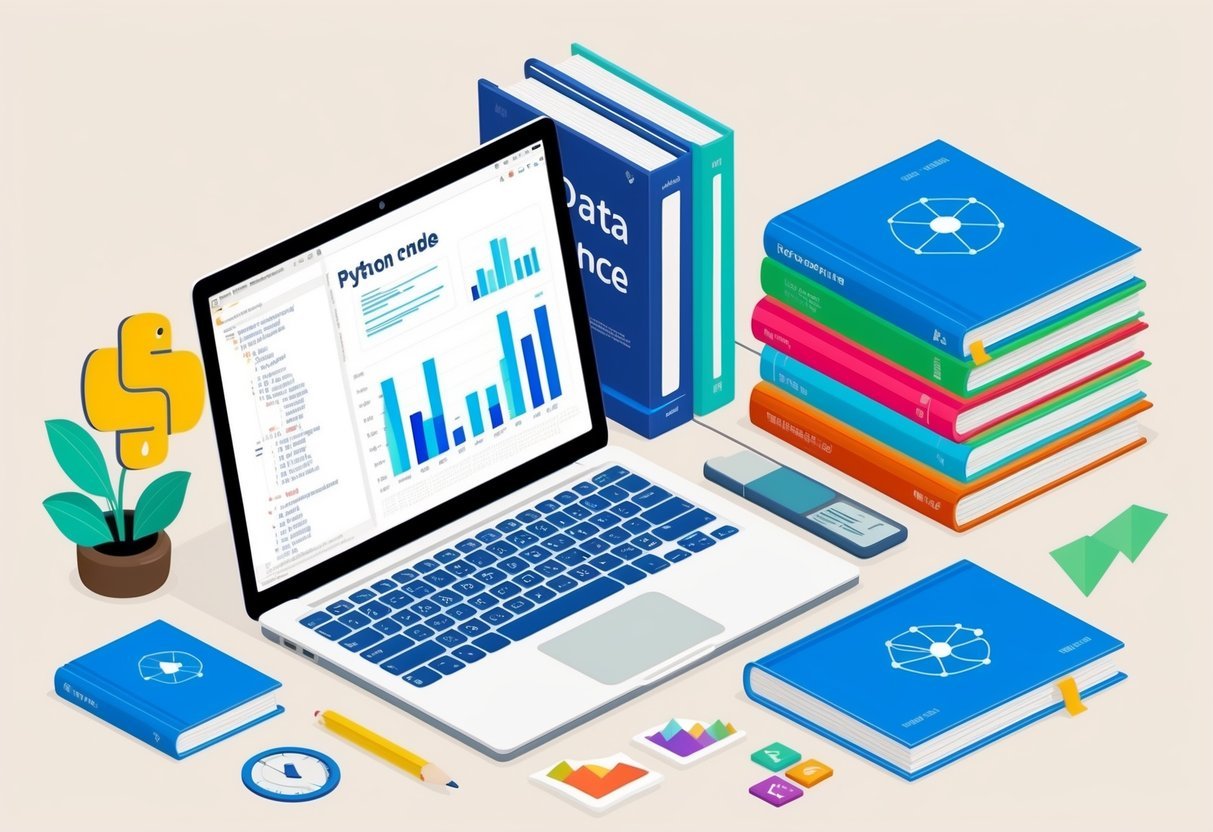
Effective code optimization and adherence to best practices are crucial for improving both performance and maintainability when working with Python.
By focusing on writing clean, efficient code and using version control systems like Git, developers can enhance their coding process, reduce errors, and contribute to innovative projects in data science.
Writing Clean and Efficient Python Code
Writing clean and efficient code is vital for reducing complexity and improving readability.
One essential practice is to use descriptive variable names, which can help others understand the code’s purpose quickly.
Another crucial tip is to keep functions short and focused, aiming for each to perform a single task. This makes debugging and testing more manageable.
Using list comprehensions instead of loops can enhance efficiency and readability. For example, [x*x for x in range(10)] is more concise than using a for loop.
Employing Python’s built-in data structures such as dictionaries and sets can also optimize performance by leveraging their efficiency.
It’s also important to use exception handling to manage errors gracefully without crashing the program.
Libraries like NumPy can significantly speed up numerical computations by providing high-performance functions. Performance can be further improved by reducing unnecessary computations and using efficient algorithms available in advanced Python optimization techniques.
Version Control with Git
Git is essential for version control in software development. It allows multiple developers to work on a project without overwriting each other’s changes.
Git tracks changes, facilitating collaboration and minimizing conflicts. Using branches in Git can also help manage different versions of a project while keeping the main codebase stable.
Commit messages should be descriptive, capturing the essence of changes. This practice aids in understanding the project’s history and reasons behind each change.
Pull requests are another useful feature, allowing team members to review code before merging it into the main branch. This fosters a culture of collaboration and continuous improvement.
By using Git, developers can experiment with new features in branches without affecting the stable codebase.
GitHub and similar platforms also offer project management and collaboration features essential for modern development practices. Implementing a version control system enhances project integrity and supports innovation in technology and coding projects.
Interactive Development Environments
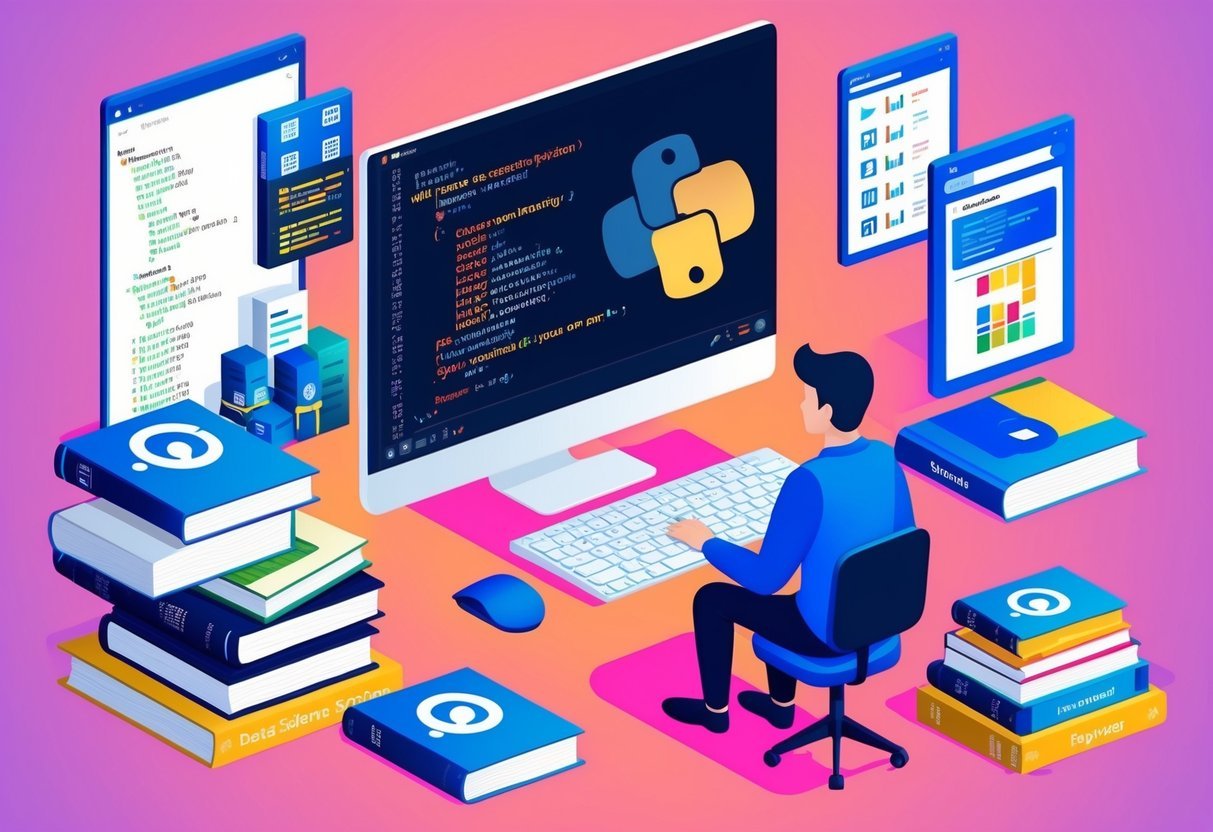
Interactive development environments enhance the coding process by providing tools that allow for dynamic interaction with code. They are essential for data scientists who need to test concepts rapidly. These environments support running code in small parts, making data exploration and analysis more efficient.
Mastering Jupyter Notebooks
Jupyter Notebook is an interactive tool popular among data scientists for its flexibility and ease of use. It allows users to write and run code in small sections, known as cells, offering an interactive experience.
This is especially useful for data science, where analyzing datasets and visualizing results often require iterative testing.
With support for adding text, code, and visuals together, Jupyter Notebooks help organize thoughts and document the workflow. They support various modules like NumPy, Pandas, and matplotlib, crucial for data analysis tasks.
Users can import these modules to perform complex data manipulations and create visualizations. The modular nature of Jupyter Notebooks makes them particularly useful for tasks in data science.
Practical Applications of Data Science
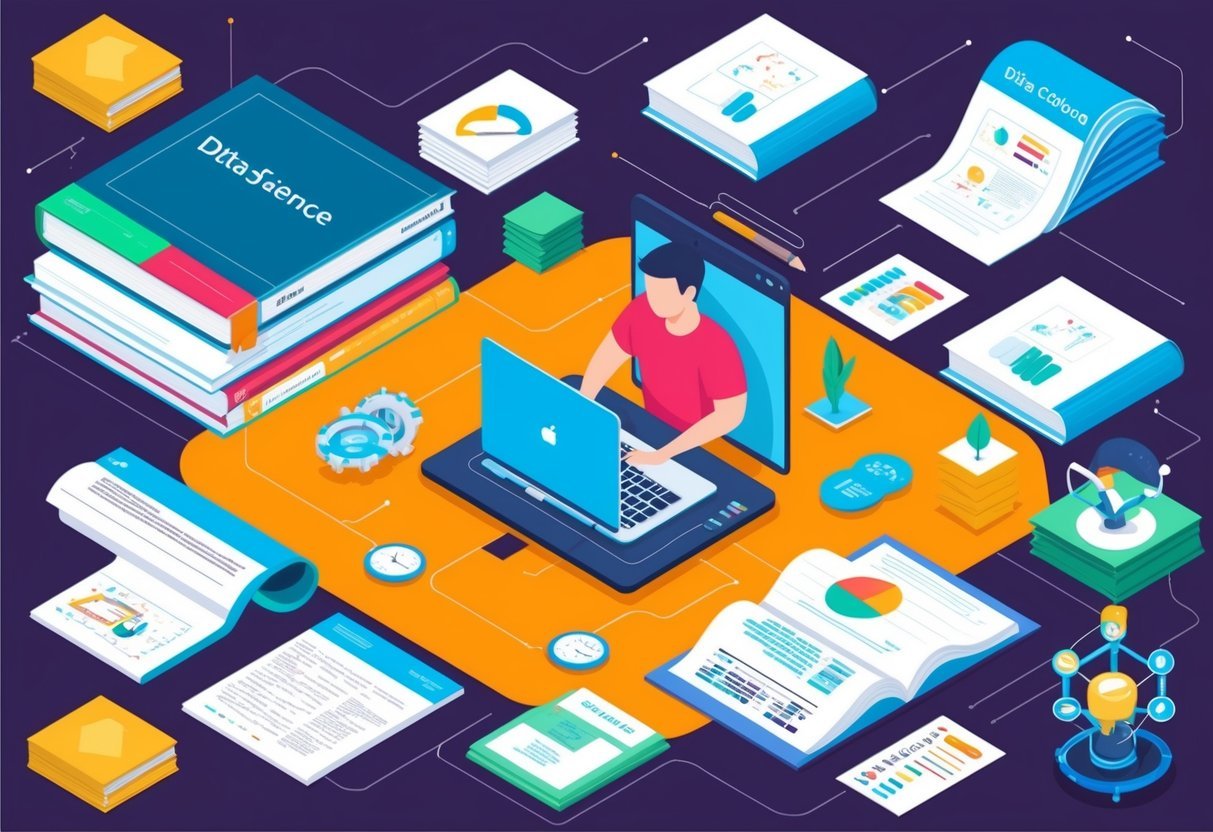
Data science is essential for solving complex problems across various sectors. It involves hands-on projects to better understand the data science workflow and improve problem-solving skills. Industry experts use data science for efficient decision-making.
Case Studies and Hands-On Projects
Hands-on projects are a fundamental way to learn data science skills. They often involve working with datasets to uncover patterns and insights.
For example, building a network graph to analyze relationships among movie cast members is an advanced project that demonstrates skills in data manipulation.
Projects like these help data analysts and students gain practical experience. Residents can use datasets from public health to predict outbreaks, or use financial data to forecast market trends. Case studies demonstrate the real-world importance of data science, offering insights into successful strategies.
Data Science in Industry
Industries utilize data science to improve efficiency and competitiveness. In healthcare, data science predicts patient outcomes and personalizes treatment plans. Retailers use it to analyze consumer behavior, optimizing stock and improving marketing strategies.
Finance and banking rely on data science applications to detect fraud and assess credit risks.
Industry experts emphasize the value of data-driven decisions, which boost performance and innovation. Data science’s problem-solving abilities are crucial, helping businesses transform vast amounts of data into strategic assets for better decision-making.
Continued Learning and Career Advancement
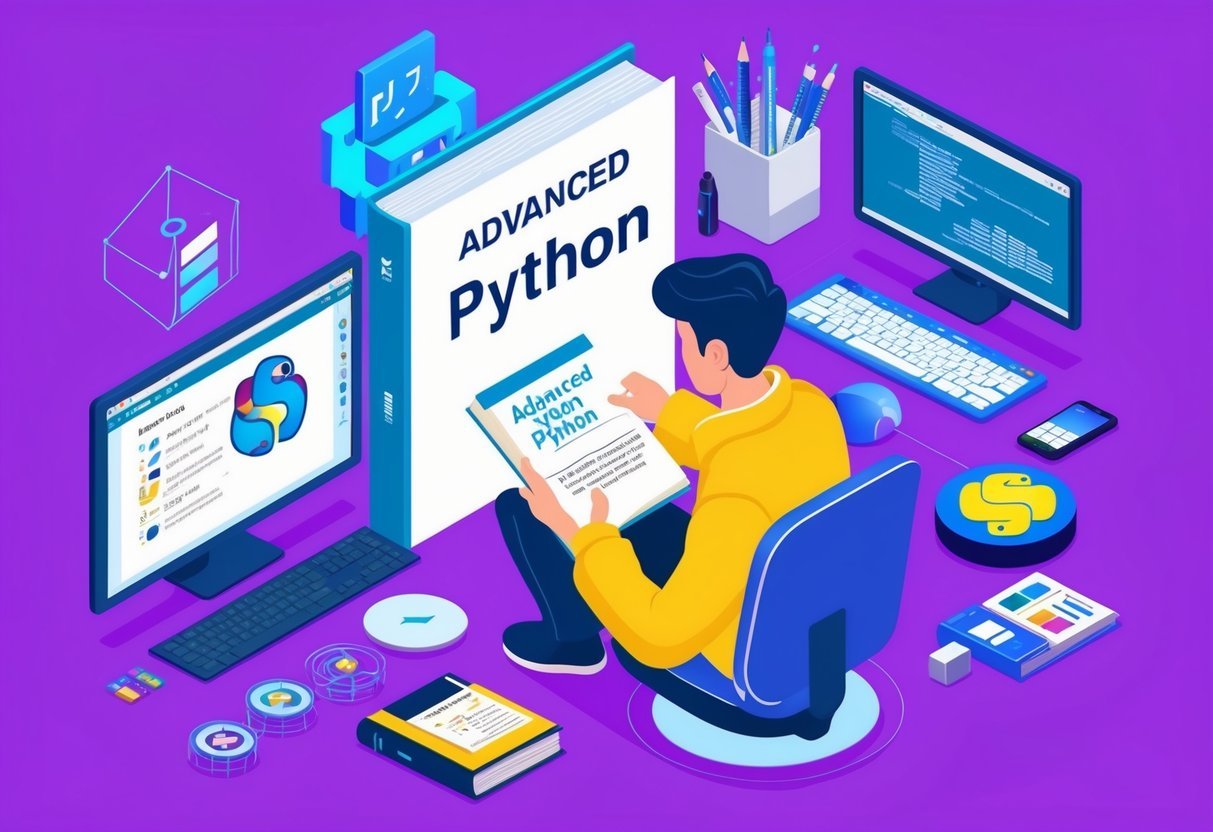
For those seeking to grow in data science, engaging with the community and keeping up with new tech developments is key. These steps not only help in upskilling but also ensure a competitive advantage in programming languages like Python.
Engaging with the Data Science Community
Participation in the data science community offers immense benefits. Platforms such as StackOverflow provide a space for data scientists to share knowledge and resolve queries.
Beginners can gain insights from experienced members, while seasoned professionals can refine their skills.
Local and online meetups are also valuable. They offer networking opportunities and expose individuals to new perspectives on data science problems.
Active community involvement helps in staying updated on the latest trends and tools. It also encourages continuous learning and professional development, facilitating career advancement over time.
Staying Updated with Emerging Technologies
Staying updated with emerging technologies is crucial in the fast-evolving field of data science.
Knowledge of the latest programming languages and frameworks can give data scientists a significant edge.
Regularly following relevant blogs, newsletters, and online courses helps professionals keep their skills sharp.
LinkedIn and DataCamp offer learning paths that cater to varying levels of proficiency, from beginners to advanced learners.
New technologies like machine learning frameworks evolve rapidly. Continuous education in these areas is essential. Adopting these technologies early can lead to a more efficient workflow and open up more career opportunities.
Frequently Asked Questions
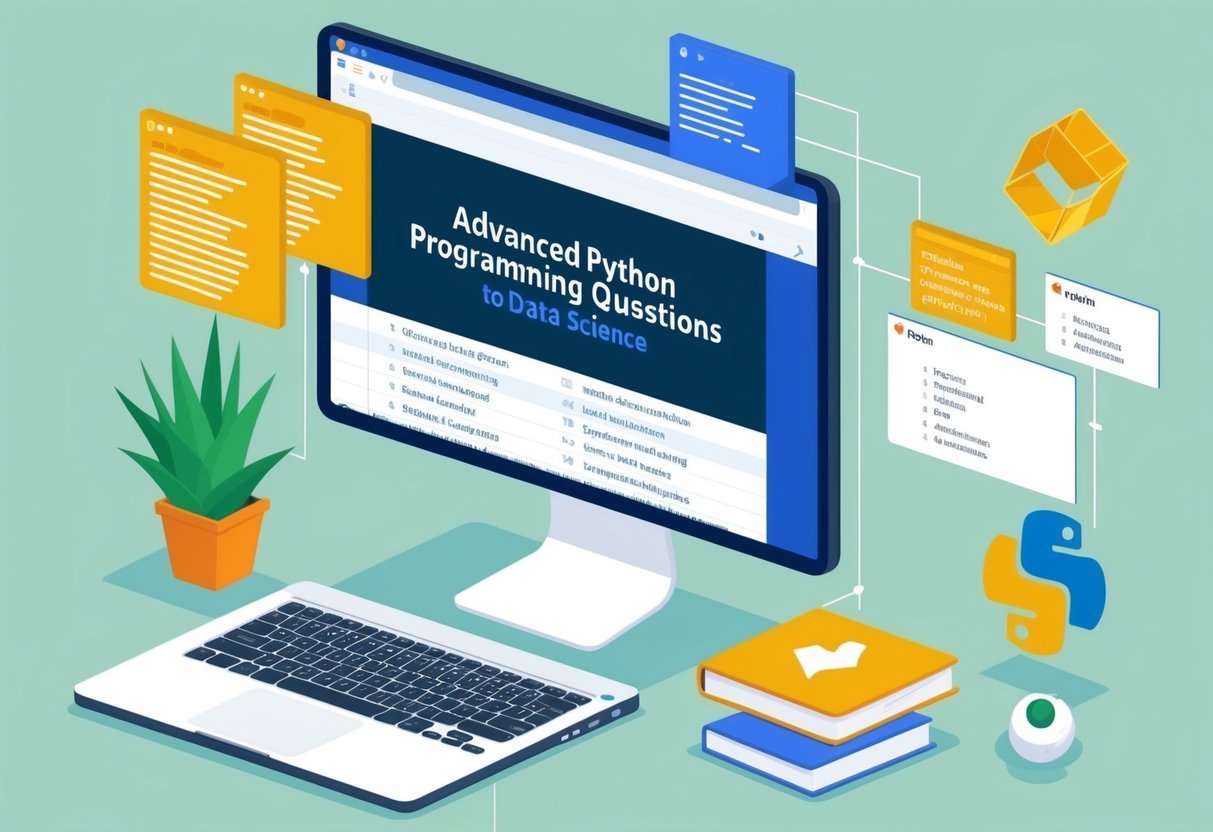
Advanced Python skills are crucial for tackling complex data science projects. Key areas include learning important libraries, enhancing coding proficiency, and understanding employer expectations.
How can I improve my Python skills to handle data science projects more effectively?
Focusing on object-oriented programming (OOP) can help in creating scalable analysis pipelines.
Practicing with real data sets and taking courses can also support skill enhancement.
What are the essential Python libraries to master for data science applications?
Tools like NumPy, pandas, and Matplotlib are vital for data manipulation, analysis, and visualization. Libraries like SciPy, scikit-learn, and TensorFlow are essential for machine learning and scientific computing.
How do I progress from basic to advanced Python coding for data science tasks?
Begin with a solid foundation in core concepts. Work on projects and real-life scenarios to transition into more complex topics.
Courses such as Python for Data Science can guide learners from beginner to advanced levels efficiently.
In the context of data analysis, which Python skills are most sought after by employers?
Employers look for proficiency in data manipulation, cleaning, and visualization. Skills in using tools like pandas for data handling and Matplotlib for plotting are crucial. Understanding of statistical analysis and machine learning is also highly valued.
What are some best practices for using Python in data science workflows?
Utilize a structured approach to coding. Regularly clean and validate data before analysis. Employ version control systems like Git, and document code thoroughly for better collaboration.
How much time is typically required to acquire advanced Python skills for a career in data science?
The timeline varies, depending on prior experience and learning dedication. Generally, achieving proficiency may take several months.
Immersive learning through projects and hands-on practice accelerates the process.
